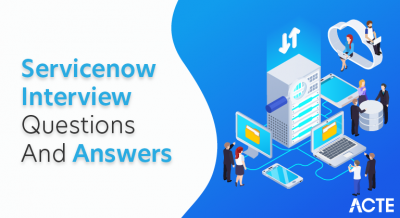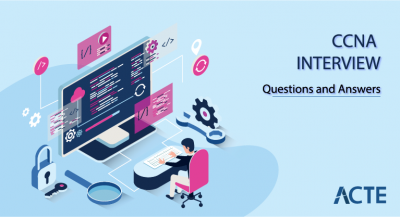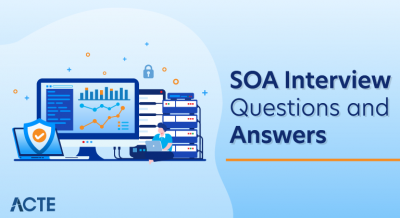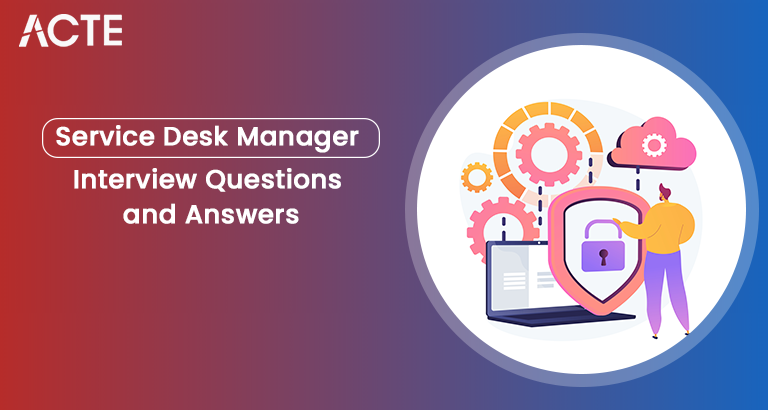
These Service Desk Manager Interview Questions have been designed specially to get you acquainted with the nature of questions you may encounter during your interview for the subject of Service Desk Manager. As per my experience good interviewers hardly plan to ask any particular question during your interview, normally questions start with some basic concept of the subject and later they continue based on further discussion and what you answer.we are going to cover top Service Desk Manager Interview questions along with their detailed answers. We will be covering Service Desk Manager scenario based interview questions, Service Desk Manager interview questions for freshers as well as Service Desk Managerinterview questions and answers for experienced.
1. How do you ensure continuous improvement in service desk operations?
Ans:
Ensuring continuous improvement in service desk operations is crucial for enhancing efficiency, customer satisfaction, and overall effectiveness. Continuous improvement involves an ongoing cycle of monitoring, analyzing, implementing changes, and measuring outcomes.
2. What critical skills are essential for a Service Desk Manager?
Ans:
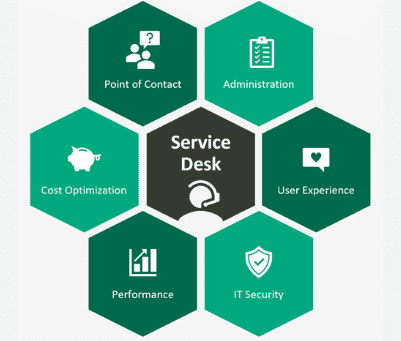
3. How do you measure the performance of the service desk team?
Ans:
Performance indicators (KPIs) such as first-call resolution rate, average resolution time, and customer satisfaction scores. Regularly reviewing these metrics allows me to identify areas for improvement and recognize outstanding performance. Additionally, I seek feedback from both team members and end-users to gain a holistic view of the service desk’s effectiveness.
4. How do you handle challenging situations when dealing with upset or frustrated users?
Ans:
- It’s essential to remain calm and empathetic and actively listen to their concerns, acknowledge the issue, and provide realistic expectations for resolution.
- If necessary, escalate the matter internally while keeping the user informed about the progress. Post-incident, initiate a review to identify areas for improvement and prevent similar issues in the future.
5. How do you prioritize and allocate resources to ensure the service desk operates efficiently?
Ans:
As a Service Desk Manager, Prioritize resources by closely monitoring incoming tickets and analyzing their impact on users and business operations. Historical data and trends are used to forecast peak activity periods and allocate staff accordingly. Additionally, Regularly assess the team’s skills and workload to ensure a balanced distribution of tasks.
6. How do you ensure that your Service Desk team stays updated on the latest technologies and industry trends?
Ans:
- They encourage continuous learning and development by providing training opportunities, workshops, and access to relevant resources.
- Regular team meetings and knowledge-sharing sessions help disseminate information about emerging technologies and industry best practices.
- Additionally, Promote a culture of curiosity and self-improvement within the team.
7. How do you ensure timely resolution of incidents and service requests?
Ans:
Timely resolution is achieved through effective resource allocation, clear communication with the support team, and leveraging IT service management (ITSM) best practices. Regular monitoring of ticket queues and performance metrics helps in identifying and addressing bottlenecks.
8. How do you handle conflicts within the service desk team?
Ans:
Address conflicts promptly by fostering open communication. Identify the root cause, encourage team members to express their concerns, and work towards a collaborative resolution. Provide coaching or mediation when necessary. Handling conflicts within a service desk team is crucial for maintaining a productive and positive work environment.
9. How do you promote a positive customer service culture within the service desk team?
Ans:
- Foster a customer-centric mindset by emphasizing the importance of excellent communication, empathy, and responsiveness. Recognize and reward outstanding customer service and provide continuous training and support.
- A positive customer service culture within the service desk team is essential for delivering exceptional customer experiences and fostering a supportive and productive work environment.
10. What strategies do you employ to improve customer satisfaction with the service desk?
Ans:
To enhance customer satisfaction, Focus on effective communication, ensuring users are informed about the status of their requests. I also encourage continuous improvement by analyzing customer feedback and implementing necessary changes. Training programs for the support team are crucial to ensure they possess the skills needed to resolve issues promptly and professionally.
11. How do you prioritize and assign tasks to your service desk team?
Ans:
Prioritizing and assigning tasks effectively is crucial for optimizing the performance and efficiency of a service desk team. “Prioritize tasks based on their impact on business operations and user experience. Urgent issues are addressed promptly, and I use a combination of skill assessment and workload distribution to assign tasks efficiently within the team.
12. How do you measure the success of your service desk team?
Ans:
- Performance indicators (KPIs) such as first-call resolution rate, average response time, and customer satisfaction scores to measure the team’s success.
- Regular performance reviews and feedback sessions help identify areas for improvement and recognize outstanding contributions.
13. How do you prioritize and assign tasks in a service desk environment?
Ans:
Prioritizing and assigning tasks in a service desk environment requires a strategic approach to ensure efficient and effective resolution of issues. Task prioritization is typically based on the urgency and impact of the issue. High-impact and high-urgency issues are addressed first. Assignments are made based on the skill set and workload of the support staff.
14. Distinguish between Incident Management and Request Fulfillment in the context of Service Desk Management. Provide key differences in a table format.
Ans:
| Incident Management | Request Fulfillment |
|---|---|
| Focuses on restoring normal service operation as quickly as possible after an incident occurs. | Deals with fulfilling service requests and standard service deliverables. |
| Reactive in nature, addressing unplanned interruptions in service (incidents). | Proactive, dealing with planned service requests and standard tasks. |
15. How do you ensure excellent customer service in the service desk environment?
Ans:
Excellent customer service is achieved through effective communication, active listening, and timely issue resolution. Emphasize continuous training for the team, implement customer feedback mechanisms, and regularly review and improve service desk processes to meet or exceed customer expectations.
16. How do you handle conflicts within your team?
Ans:
- Address conflicts promptly, encourage open communication, and seek resolutions collaboratively. Establishing clear expectations and fostering a positive team culture can help prevent conflicts.
- With these strategies and fostering a culture of open communication, collaboration, and mutual respect, teams can effectively address and resolve conflicts, strengthen relationships, and promote a positive and productive work environment.
17. What steps do you take to ensure the security of sensitive information handled by the service desk?
Ans:
Implementing security protocols, access controls, and regular training on data protection and best practices are crucial. Regular audits and compliance checks are also essential to maintain data security. Ensuring the security of sensitive information handled by the service desk is crucial to protect the confidentiality, integrity, and availability of data.
18. What are the critical skills required for a Service Desk Manager?
Ans:
A Service Desk Manager plays a crucial role in overseeing the operations, managing the team, and ensuring the delivery of quality services to customers. Here are some essential skills required for a Service Desk Manager:
- Technical Expertise
- Leadership and Management Skills
- Communication Skills
- Problem-solving and Decision-Making Skills
- Customer Service Orientation
- Analytical and Strategic Thinking
19. How do you prioritize incidents in a service desk environment?
Ans:
- Prioritization is typically based on the impact and urgency of the incident. Critical issues affecting multiple users or business-critical systems take precedence, followed by high-impact incidents affecting individual users.
- Urgency is determined by how quickly a resolution is needed. Prioritizing incidents in a service desk environment is essential to ensure that resources are allocated effectively and critical issues are addressed promptly.
20. What strategies do you employ to improve customer satisfaction at the service desk?
Ans:
Regular communication, setting clear expectations, providing timely updates on incident resolution, and implementing customer feedback mechanisms are crucial for improving customer satisfaction. Training and empowering service desk staff also contribute to better service delivery.
21. How do you handle escalations within the service desk?
Ans:
Service Desk Managers need to ensure that escalations are handled promptly, communication is transparent, and resolution efforts are escalated to the appropriate level of expertise. Handling escalations within the service desk is a critical aspect of incident management to ensure that complex or high-priority issues are addressed promptly and effectively.
22. How do you approach continuous improvement at the service desk?
Ans:
Continuous improvement involves:
- Analyzing performance metrics.
- Gathering customer feedback.
- Identifying areas for improvement.
- Implementing changes.
- Regularly reviewing and refining processes.
Adopting a systematic and structured approach to continuous improvement can help service desks identify opportunities for optimization and implement sustainable improvements.
23. How do you stay updated on industry trends and best practices in service desk management?
Ans:
Service Desk Managers should demonstrate a commitment to professional development. Answers may include attending conferences, participating in webinars, joining professional networks, and staying informed through industry publications. Staying updated on industry trends and best practices in service desk management is crucial to ensure that service desks remain effective, efficient, and aligned with current standards and expectations.
24. How do you prioritize and categorize support tickets at a Service Desk?
Ans:
Prioritization is often based on the impact and urgency of the issue. Categories can include hardware problems, software issues, user training, and more. Establishing a transparent classification system helps assign appropriate resources and set expectations for issue resolution times.
25. What strategies can a Service Desk Manager employ to improve customer satisfaction?
Ans:
- Improving customer satisfaction involves proactive communication, timely issue resolution, and continuous service improvement. Regularly collecting feedback, implementing customer-centric policies, and providing training to support staff are effective strategies.
- Improving customer satisfaction is a crucial objective for Service Desk Managers as it directly impacts the overall perception of the IT organization and the value delivered to the business
26. How do you measure the performance of your Service Desk team?
Ans:
Key performance indicators (KPIs) such as first-response time, resolution time, customer satisfaction scores, and ticket escalation rates are commonly used to measure Service Desk performance. Regularly analyzing these metrics helps identify areas for improvement. Regularly review and analyze performance data, communicate findings, and collaborate with the team to drive continuous improvement and achieve operational excellence.
27. What steps can be taken to ensure continuous improvement in the Service Desk environment?
Ans:
- Ensuring continuous improvement in the Service Desk environment is essential to enhance efficiency, effectiveness, and customer satisfaction.
- Regularly review and analyze performance metrics, conduct training sessions for staff, seek customer feedback, and implement best practices from the industry.
- Establishing a culture of continuous improvement encourages innovation and enhances overall service quality.
28. How can a Service Desk Manager ensure excellent customer service?
Ans:
Service Desk Managers can ensure excellent customer service by implementing best practices such as effective communication, prioritizing customer needs, providing timely resolutions, and regularly gathering feedback for continuous improvement. Ensuring excellent customer service is a fundamental responsibility of a Service Desk Manager.
29. What key metrics should a Service Desk Manager track?
Ans:
Tracking key metrics is essential for a Service Desk Manager to assess performance, optimize operations, and drive continuous improvement. Here are some key metrics that a Service Desk Manager should consider tracking:
- First Contact Resolution (FCR) Rate
- Average Response Time
- Customer Satisfaction Score (CSAT)
- Average Resolution Time
- Incident Volume and Trends
- Escalation Rates and Trends
- Knowledge Base Utilization and Self-Service Adoption
30. How can a Service Desk Manager handle a high volume of tickets efficiently?
Ans:
To handle a high volume of tickets efficiently, Service Desk Managers should implement automation where possible, prioritize critical issues, optimize workflows, provide proper training to the team, and regularly review and update processes to improve efficiency.
31. How can a Service Desk Manager foster a positive team culture?
Ans:
To foster a positive team culture, Service Desk Managers should encourage open communication, recognize and reward achievements, provide opportunities for professional development, and promote a collaborative and supportive work environment.
32. What strategies can a Service Desk Manager use for continuous improvement?
Ans:
Continuous improvement can be achieved through regular performance reviews, analyzing customer feedback, identifying areas for automation, implementing new technologies, and staying updated on industry best practices.
33. How do you handle escalations from the service desk?
Ans:
Escalations should be handled promptly and effectively. Service Desk Managers need to have clear escalation procedures in place, ensure proper documentation, and provide additional resources or expertise if required to resolve the escalated issue.
34. How can a Service Desk Manager stay updated on industry trends?
Ans:
Staying updated on industry trends involves:
- Attending conferences.
- Participating in webinars.
- Joining professional networks.
- Subscribing to relevant publications.
- Encouraging continuous learning within the team.
To ensure that their team remains competitive, efficient, and aligned with best practices.
35. How do you prioritize and manage the workload of your service desk team?
Ans:
Prioritize workload based on the urgency and impact of incidents or service requests. Critical issues that impact business operations take precedence. I also ensure a balanced distribution of tasks among team members, considering their strengths and workload capacity.
36. How do you measure the performance of the service desk team?
Ans:
Measuring the performance of a service desk team is crucial to ensure that they are meeting organizational goals, providing efficient support, and continuously improving their service delivery.
- First Call Resolution (FCR)
- Average Response Time
- Average Resolution Time:
- Incident Volume
- Customer Satisfaction (CSAT) Score
- First Contact Resolution Rate
- Escalation Rate
- Backlog or Ticket Aging
37. How do you handle a situation where the service desk is overwhelmed with a high volume of incidents?
Ans:
In such cases, I would prioritize critical incidents and allocate additional resources if possible. I’d also assess the root cause of the surge to prevent future occurrences. Communication is critical; keeping stakeholders informed about the situation and potential resolution timelines helps manage expectations.
38. How do you handle a dissatisfied customer who is not satisfied with the resolution provided by the service desk?
Ans:
- Handling a dissatisfied customer can be challenging but is crucial for maintaining good customer relations.
- They investigate the case, communicate the steps being taken for resolution, and provide regular updates.
- If necessary, I’d escalate the matter for a swift and satisfactory resolution.
39. How do you ensure that the service desk team meets service level agreements (SLAs)?
Ans:
Ensuring that the service desk team meets Service Level Agreements (SLAs) is crucial for maintaining customer satisfaction and meeting organizational objectives. Here are several strategies and best practices to help ensure compliance with SLAs.
- Clearly Defined SLAs
- Process Improvement
- Training and Development
- Performance Metrics and KPIs
- Monitoring and Reporting
40. How do you ensure continuous improvement in the service desk operations?
Ans:
Continuous improvement is vital for service desk operations. I regularly review incident trends, customer feedback, and team performance metrics. Implementing feedback loops and conducting post-incident reviews helps identify areas for improvement. They also encourage team members to suggest process enhancements and invest in ongoing training to keep the team updated on industry best practices.
41. How do you handle a situation where the service desk team is overwhelmed with a high volume of support requests?
Ans:
During peak times, Emphasize effective communication and collaboration within the team. We streamline processes, leverage automation where possible, and ensure that urgent issues are addressed first. Additionally, I work on identifying the root cause of the increased volume to implement long-term solution
42. How do you ensure a positive customer experience at the service desk?
Ans:
- Prioritize customer satisfaction by fostering a customer-centric culture.
- Encourage my team to communicate clearly, empathize with users, and provide timely updates. Regular customer feedback surveys help identify areas for improvement.
43. How do you handle a situation where there is a disagreement within your service desk team?
Ans:
Believe in open communication and fostering a collaborative environment. When conflicts arise, I encourage team members to express their perspectives, and I facilitate constructive discussions to find mutually agreeable solutions. Resolving conflicts promptly is crucial to maintaining a cohesive team.
44. How do you stay updated on industry trends and best practices in service desk management?
Ans:
Networking with peers and subscribing to relevant publications keeps me abreast of the latest developments in service desk management.” However, I can provide you with general suggestions on how to stay updated on industry trends and best practices in service desk management:
- Professional Organizations and Associations
- Conferences and Events
- Online Forums and Communities
- Blogs and Websites
- Webinars and Online Training
- Social Media
- Whitepapers and Research Papers
- Vendor Updates
- Networking
- Continuous Learning
46. What skills are essential for a Service Desk Manager?
Ans:
Essential skills include strong leadership, communication, problem-solving, and technical skills. To excel in this role, a Service Desk Manager should possess a combination of technical, managerial, and interpersonal skills. Service Desk Managers should also be proficient in IT service management frameworks like ITIL and have a good understanding of the technologies their team supports.
47. How do you ensure your service desk team stays up-to-date with the latest technologies and industry trends?
Ans:
This encourages continuous learning through regular training sessions, workshops, and certifications. I also foster a culture of knowledge sharing within the team. Additionally, staying connected with industry forums, attending conferences, and subscribing to relevant publications help keep us informed about emerging technologies and trends
48. How do you balance the need for speed in issue resolution with maintaining a high level of customer satisfaction?
Ans:
- Balancing speed and customer satisfaction requires effective prioritization and clear communication. Emphasize a ‘first-time resolution’ approach, ensuring that issues are thoroughly addressed.
- Regular feedback loops and customer surveys help us identify areas for improvement while maintaining a commitment to timely solutions.
49. How do you handle escalations from your team?
Ans:
Encourage my team to resolve issues at their level, but for escalations and established process. Ensure that all relevant information is documented, and then Personally investigate the escalated issue. Clear communication with both the customer and the team is essential to manage expectations and find a resolution promptly
50. How do you prioritize and assign tasks in a high-pressure environment?
Ans:
- Prioritizing tasks is crucial in a fast-paced environment. Typically use a combination of urgency, impact on business operations, and customer importance to determine priorities.
- Believe in empowering my team to make informed decisions within their scope. Regular communication and collaboration ensure that everyone is aligned and focused on the most critical tasks
51. How do you approach the development of key performance indicators (KPIs) for the service desk, and how do you use these metrics to drive improvement?
Ans:
This collaborates with stakeholders to establish KPIs that align with business objectives, such as first-call resolution rates, average response times, and customer satisfaction scores. Regularly analyzing these metrics helps identify trends, implement improvements, and ensure the service desk is meeting performance targets.
52. How do you measure and improve service desk performance?
Ans:
To measure service desk performance. Metrics such as first call resolution, average resolution time, and customer satisfaction scores are valuable. Regular performance reviews and feedback sessions with the team help identify areas for improvement. Implementing continuous improvement processes and leveraging feedback from end-users are integral to enhancing overall service desk performance.
53. How do you prioritize and assign tasks to your team?
Ans:
- Prioritization is crucial in a service desk environment. Use a combination of urgency and impact assessments to prioritize tasks. Critical issues that affect multiple users or hinder business operations are addressed first.
- Take into account the skills and expertise of each team member when assigning tasks, ensuring that the workload is distributed evenly and that each member is working on tasks that align with their strengths.
54. How do you foster a positive and collaborative team environment within the service desk?
Ans:
Fostering a positive environment involves clear communication, recognizing and rewarding team achievements, providing opportunities for professional growth, and encouraging collaboration. Regular team meetings, open feedback channels, and team-building activities contribute to a positive work culture. A positive and collaborative team environment within a service desk is crucial for enhancing productivity, job satisfaction, and overall effectiveness.
55. How do you prioritize and manage multiple incidents or service requests in a high-pressure environment?
Ans:
- Prioritization is crucial in a fast-paced environment. Use a combination of urgency and impact assessments to prioritize incidents and service requests.
- This ensures that critical issues are addressed promptly, and less urgent matters are managed efficiently. Regular communication with the team helps in distributing workload effectively and maintaining a balance.
56. How do you handle team conflicts or performance issues within the service desk team?
Ans:
Open communication is key in resolving conflicts. I address issues promptly, encourage a culture of mutual respect, and provide constructive feedback. For performance issues, I believe in setting clear expectations, offering training and development opportunities, and establishing improvement plans when necessary. Recognition for achievements is also important to motivate the team.
57. How do you ensure customer satisfaction while managing the service desk?
Ans:
Customer satisfaction is a top priority. I encourage a customer-centric culture within the team, emphasizing effective communication and empathy. Regular feedback surveys and performance metrics help in identifying areas for improvement. Additionally, I believe in continuous training to enhance the team’s technical and soft skills, resulting in better customer interactions.
58. How do you handle a situation where the service desk is receiving a high volume of incidents?
Ans:
In such situations, it’s crucial to ensure proper incident categorization and prioritization. Additional actions may include:
- Implementing a temporary surge staffing plan: Bring in additional support to handle the increased workload.
- Communication: Keeping stakeholders informed about the situation and managing expectations.
- Root cause analysis: Investigating the cause of the spike in incidents to prevent future occurrences.
- Process improvement: Identifying areas for process improvement to enhance efficiency.
Ans:
59. How do you prioritize incidents and service requests in a service desk environment?
Ans:
Prioritization involves assessing the impact and urgency of incidents or service requests. The impact is the effect on the business, while urgency relates to the time within which a resolution is required. Using a matrix that considers both factors, incidents can be categorized as high, medium, or low priority.
60. How do you ensure effective communication between the service desk and end-users?
Ans:
They implemented a robust communication strategy, including regular status updates on ongoing incidents, proactive notifications about system maintenance, and clear instructions for end-users. I also encouraged the team to use plain language, avoiding technical jargon when communicating with non-technical users.
61. Describe your approach to handling a dissatisfied customer who is unhappy with the service provided by the service desk
Ans:
Handling a dissatisfied customer is a delicate situation that requires empathy, effective communication, and a commitment to finding a resolution. Transparency and a commitment to continuous improvement are crucial in rebuilding trust.
62. How do you stay informed about industry trends and best practices in Service Desk Management?
Ans:
- Actively participate in industry forums, attend conferences, and engage with professional networks.
- Additionally, encourage continuous learning within the team, ensuring that we stay updated on the latest technologies and best practices in IT support.
63. What key performance indicators (KPIs) do you consider most important for measuring Service Desk performance?
Ans:
This considers metrics such as first-call resolution rate, average resolution time, and customer satisfaction scores to be crucial. These indicators provide insights into the efficiency of our operations and the overall satisfaction of our users.”Selecting key performance indicators (KPIs) for measuring Service Desk performance is critical for evaluating the effectiveness of support operations.
64. Describe your approach to implementing and managing ITIL processes within the Service Desk.
Ans:
- “Implementing and managing ITIL (Information Technology Infrastructure Library) processes within the Service Desk is critical for ensuring efficient and standardized IT service delivery. This involves implementing incident, problem, change, and knowledge management processes.”
- Aligning Service Desk operations with ITIL best practices. Regular reviews and improvements are made to ensure the ongoing effectiveness of these processes.
65. How do you handle a situation where there is a surge in incoming incidents or service requests?
Ans:
In the event of a surge, assess the situation to determine if it’s a widespread issue or a localized incident. Then allocate resources accordingly, potentially reallocating staff or leveraging additional resources if needed. Communication is key during such times to manage user expectations
66. What strategies do you employ to ensure excellent customer service within the Service Desk?
Ans:
- Ensuring excellent customer service within the Service Desk is essential for building trust, satisfaction, and a positive reputation.
- The focus on effective communication, ensuring that our team is responsive, empathetic, and keeps users informed throughout the resolution process.
- Regular training and feedback sessions are conducted to enhance the team’s customer service skills.
67. How do you ensure continuous improvement at the service desk? 6
Ans:
Continuous improvement involves:
- Regular analysis of performance metrics: Identifying trends and areas for enhancement.
- Feedback loops: Gathering input from customers, end-users, and the service desk team.
- Implementing best practices: Staying updated on industry standards and adopting relevant practices.
- Training and development: Providing ongoing training to the service desk team to enhance skills and knowledge.
68. How do you handle conflicts within your team or between team members and other departments?
Ans:
Open communication is key. I encourage team members to discuss conflicts openly and constructively. Also foster collaboration with other departments through regular meetings and joint projects to build positive working relationships and resolve issues proactively.
69. Describe your approach to customer satisfaction and how you measure it.
Ans:
- Customer satisfaction is a priority, and regularly gather feedback through surveys and monitoring interactions.
- Analyze this data to identify areas for improvement, and work closely with the team to address any issues, ensuring that we consistently meet or exceed customer expectations.
70. How do you ensure excellent customer service in a service desk environment?
Ans:
Excellent customer service involves clear communication, timely issue resolution, and a proactive approach. Emphasize continuous training for support staff, implement customer feedback mechanisms, and regularly review and improve processes to enhance overall service quality.
71. How do you ensure a high level of customer satisfaction with the service desk?
Ans:
The service desk involves a combination of strategic approaches, effective communication, and continuous improvement. Customer satisfaction is achieved through effective communication, timely issue resolution, and a customer-centric approach. Regular feedback surveys, monitoring key performance indicators (KPIs), and continuous improvement initiatives are essential in ensuring a positive customer experience.
72. Can you describe your approach to building and leading a successful service desk team?
Ans:
Building a successful team involves hiring skilled individuals, providing comprehensive training, fostering a positive work environment, and promoting collaboration. Clear communication, setting performance expectations, and recognizing achievements are crucial for team motivation and success. This requires a combination of effective leadership, strategic planning, and a focus on fostering a positive and collaborative work environment.
73. How do you measure the success and effectiveness of the service desk?
Ans:
- Key performance indicators (KPIs) such as first call resolution rate, average resolution time, customer satisfaction scores, and adherence to SLAs are used to measure success.
- Regular performance reviews, feedback from end-users, and trend analysis contribute to ongoing improvements.
74. How do you handle a situation where a team member consistently needs to meet performance expectations?
Ans:
During times of increased ticket volume, I first analyze the root cause to address any systemic issues. Simultaneously, ensure clear communication with the team, possibly implementing temporary measures like overtime or additional resources if necessary. Goal is to maintain service levels and then work on strategies to prevent similar spikes in the future.
76. Can you discuss your approach to implementing new tools or technologies in the Service Desk environment?
Ans:
- When implementing new tools or technologies, start by conducting a thorough assessment of our current processes and identifying areas for improvement.
- They involve the team in the decision-making process, provide adequate training, and gradually roll out changes to minimize disruptions.
- Post-implementation, I monitor the effectiveness of the new tools and gather feedback for further refinement
77. How do you prioritize and assign tasks to your team to ensure efficient service delivery?
Ans:
They prioritize tasks based on their impact and urgency, following the ITIL framework. Critical incidents are addressed immediately, while service requests and lower-priority issues are managed based on their impact on business operations. Also consider the skills and workload of each team member when assigning tasks to ensure a balanced workload.
78. How do you ensure continuous improvement within the Service Desk?
Ans:
Continuous improvement is crucial for service excellence. Regularly analyze performance metrics, gather feedback from users and team members, and conduct post-incident reviews. Implementing the lessons learned from these reviews, introduce process improvements, provide additional training, and leverage technology to enhance efficiency. This proactive approach helps in maintaining a high standard of service delivery.
79. What are the primary responsibilities of a Service Desk Manager?
Ans:
The primary responsibilities of a Service Desk Manager include:
- Overseeing the daily operations of the service desk.
- Managing the support team.
- Ensuring timely resolution of user issues.
- Implementing and improving service desk processes.
- Collaborating with other IT teams to enhance overall service delivery.
80. How do you ensure effective communication between the Service Desk team and other IT departments?
Ans:
Effective communication is essential for a well-functioning IT environment. Encourage regular meetings and collaboration between the Service Desk and other IT teams. This ensures that everyone is on the same page regarding ongoing projects, known issues, and upcoming changes. Additionally, utilizing a shared documentation system helps in maintaining transparency and facilitates smoother communication.
81. How do you handle conflicts within the Service Desk team or between team members and other departments?
Ans:
- Members and other departments address conflicts promptly by fostering open communication and understanding each party’s perspective.
- Mediation and conflict resolution techniques are employed, and work towards establishing a collaborative culture to prevent future conflicts.
82. Describe a successful service desk project or initiative you’ve led in the past.
Ans:
Discuss a project where you demonstrated effective leadership, problem-solving skills, and collaboration with team members. Highlight the positive outcomes, such as improved efficiency, customer satisfaction, or the successful implementation of new tools or processes.
83. How do you handle conflicts within your team or between team members and customers?
Ans:
Conflicts are inevitable, and I believe in addressing them promptly and constructively. Encourage open communication and actively listen to both sides to understand the root cause. Then facilitate a collaborative resolution, ensuring all parties are heard and contributing to finding a solution. It’s crucial to maintain a positive team culture and foster a customer-centric mindset.
84. How do you measure and track the success of your service desk team?
Ans:
- Key performance indicators (KPIs) are essential for tracking success. Regularly monitor metrics such as first-call resolution rates, average response times, and customer satisfaction scores.
- Regular feedback from end-users and team members is also valuable. Adjustments to workflows and training programs are made based on these metrics to continuously improve the team’s performance.
85. How do you foster a positive team culture in a service desk environment?
Ans:
Fostering a positive team culture is essential for a service desk. I believe in open communication, recognizing achievements, and providing constructive feedback. Regular team meetings, training sessions, and team-building activities help build camaraderie. I also encourage a collaborative environment where team members can share their insights and ideas for continuous improvement.
86. What role does employee development play in your management approach for the service desk team?
Ans:
- Employee development is a priority. I conduct regular performance evaluations, set individual development plans, and provide training opportunities.
- By investing in their skills and career growth, I ensure a motivated and skilled service desk team. Prioritizing employee development is not just about enhancing individual skills.
- It is about creating a dynamic and growth-oriented team that can collectively navigate challenges and contribute to the overall success of the service desk.
87. How do you handle a situation where the team is consistently missing service level targets?
Ans:
If the team is consistently missing service level targets, conduct a thorough analysis to identify the root causes. This may involve evaluating workload distribution, assessing team skill sets, and reviewing existing processes. Once the issues are identified, implement targeted training, adjust workflows, and set realistic expectations to improve overall performance.
88. How do you prioritize incidents and service requests in a high-pressure environment?
Ans:
In prioritize incidents and service requests based on their impact on business operations. Critical issues that directly affect productivity or revenue receive immediate attention, while less urgent matters are addressed according to established service level agreements. Effective communication with stakeholders is crucial to manage expectations and provide transparent updates.
89. How do you ensure excellent customer service in your Service Desk team?
Ans:
Customer service is a top priority. Emphasize active listening and empathy in our interactions. Regular training sessions are conducted to keep the team updated on communication skills and technical knowledge. Additionally, encourage regular feedback from customers and use it to continuously improve our support processes.
90. What skills are essential for a Service Desk Manager?
Ans:
Critical skills include strong leadership and communication abilities
- Technical proficiency,
- Problem-solving skills,
- Customer service orientation, and
- The ability to prioritize and manage tasks effectively.
91. How do you ensure high levels of customer satisfaction?
Ans:
Regular communication, timely issue resolution, customer feedback collection, and continuous improvement initiatives are essential. Monitoring service desk metrics and implementing improvements based on feedback contribute to customer satisfaction.
92. How do you handle a situation where the service desk is overwhelmed with incoming requests?
Ans:
- During peak times, believe in having a scalable plan in place.
- This includes cross-training team members, implementing automation where possible, and providing additional resources as needed.
- Also emphasize effective communication with customers, setting realistic expectations about response times during high-demand periods.
93. How do you ensure excellent customer service at the service desk?
Ans:
Ensuring excellent customer service involves training and developing service desk staff, implementing customer-focused processes, and regularly measuring customer satisfaction. Effective communication and empathy are also crucial for understanding and meeting customer needs.
94. How do you approach building a positive team culture within the Service Desk?
Ans:
A positive team culture within the Service Desk is crucial for fostering collaboration, enhancing morale, and ultimately improving the quality of service delivered to end-users. Regular team-building activities, recognition for achievements, and open communication channels contribute to a positive work environment. Also encourage a feedback loop where team members can provide input on processes and share ideas for improvement.
95. How do you handle a high volume of incoming tickets during peak periods?
Ans:
During peak periods, effective triaging is essential. Ensure that the team is well-prepared by adjusting schedules, cross-training team members, and utilizing automation tools for routine tasks. Clear communication with customers about potential delays is also crucial to manage expectations.
96. How do you ensure that your team stays updated on the latest technologies and best practices?
Ans:
- Continuous learning is essential in the fast-paced IT environment. I encourage my team to participate in regular training sessions, webinars, and workshops.
- Additionally, I foster a culture of knowledge sharing within the team, where members are encouraged to share insights and experiences.
97. How do you prioritize and assign tasks in a busy Service Desk environment?
Ans:
Prioritization is crucial in a Service Desk. I typically categorize issues based on urgency and impact on business operations. Critical issues are addressed first, followed by those with high impact. I also leverage a ticketing system to automate and streamline task assignment based on workload and expertise.
98. How do you handle a situation where there is a significant increase in support requests?
Ans:
- In such scenarios, first assess the situation to identify any patterns or common issues causing the spike.
- Then prioritize critical issues, allocate resources efficiently, and communicate transparently with stakeholders about potential delays.
- Implementing temporary workarounds and leveraging automation tools can also help manage the increased workload effectively
99. How do you measure the success of the service desk?
Ans:
Success can be measured through key performance indicators (KPIs) such as resolution time, customer satisfaction scores, first-call resolution rate, and adherence to service level agreements (SLAs).
100. What strategies can be employed to improve service desk efficiency?
Ans:
To improve efficiency, Service Desk Managers can implement automation for routine tasks, streamline processes, conduct regular training to enhance staff skills and leverage performance metrics to identify areas for improvement. Improving service desk efficiency is crucial for providing timely and practical support to end-users.



